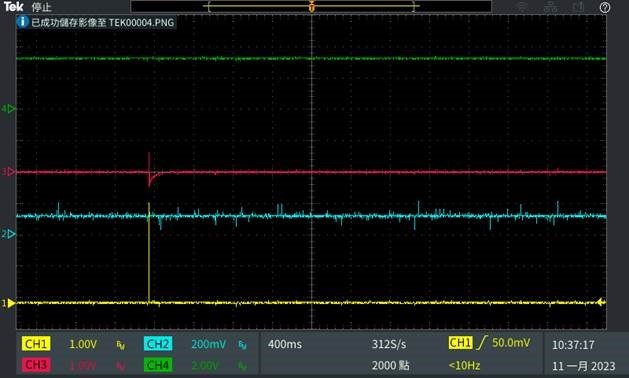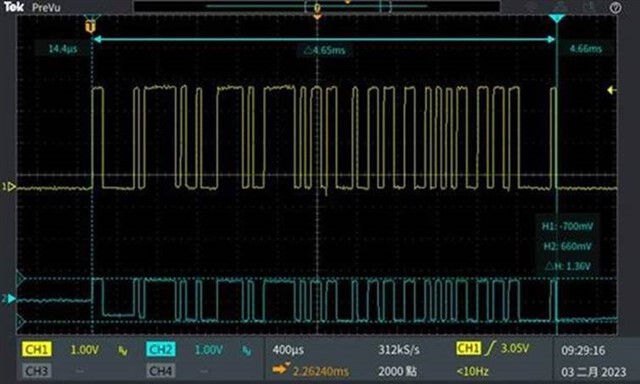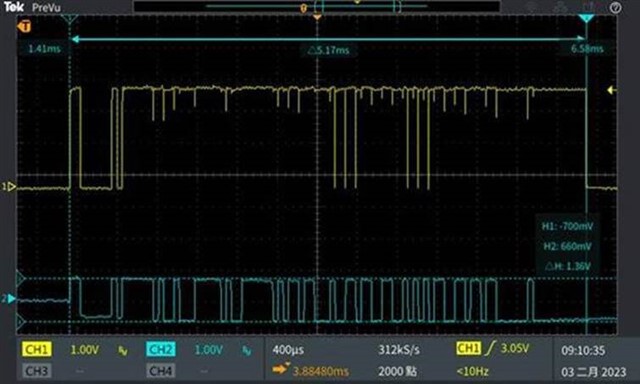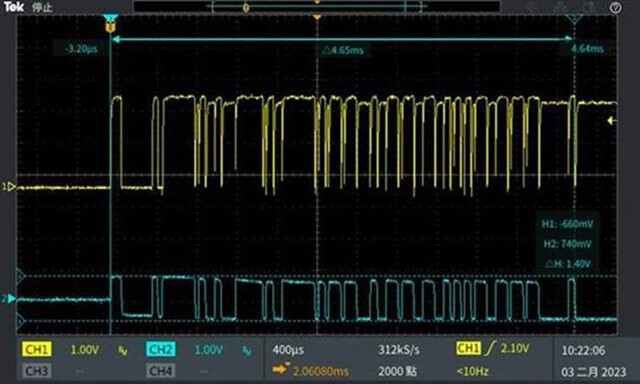Hi Team,
The current failure rate is 2500/2500, unable to write into the MCU, and the top image 28M still has 30K in stock.
There are currently 11 LOTs of 28M in stock, and each test of 10 units found the same loading condition, but the 27K/28K returned from the same batch did not have this problem.
This product is a digital meter case, which has been mass-produced for 4 years, and the design has not been changed during this period.
After checking, the OPA LM2903 output is abnormal, which makes the MCU unable to read and write. Test waveforms and the schematic are as the following.
CH1:OPT_RXD, CH2:LM2903 Pin2, CH3:LM2903 Pin3, CH4:LM2903 Pin8_3.3V
- OK sample: OPT_RDX has an output signal
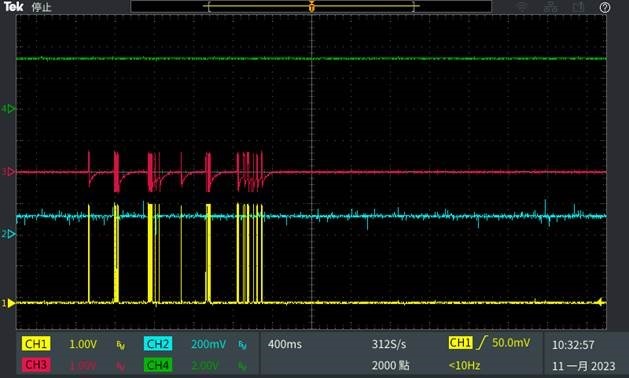
- NG sample: OPT_RDX no output signal
